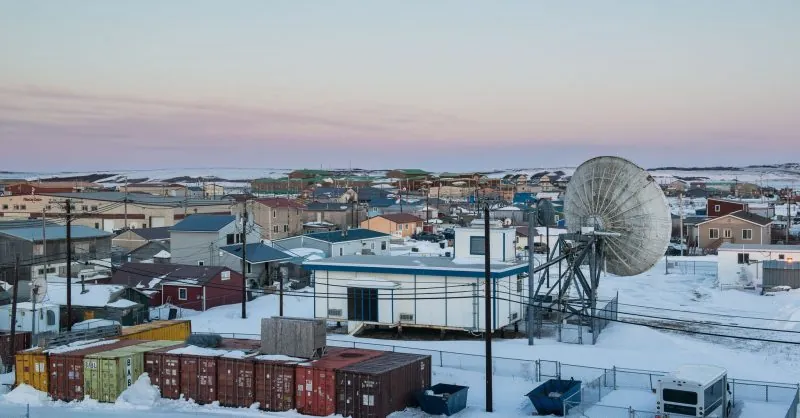Alaska, often dubbed the Last Frontier, conjures images of vast wilderness, breathtaking glaciers, and rugged individualism. However, beneath the picturesque canvas lies a reality where certain pockets grapple with high crime rates, painting a darker picture of everyday life for some residents. While labeling entire towns or neighborhoods as “dangerous” is a nuanced issue, understanding the complexities of crime is crucial for informed navigation and community support. This article delves beyond statistics to unmask the realities of Alaska’s most vulnerable areas, exploring the factors that contribute to their struggles and seeking glimpses of hope amidst the challenges.
The Statistical Lens: Cities Under Scrutiny
Data compiled by the FBI reveals a sobering truth: several Alaskan cities consistently rank high in terms of crime rates. Kotzebue, a small town nestled in the Northwest Arctic Borough, takes the dubious crown as the most dangerous, with staggering statistics. Residents face a 1 in 30 chance of encountering violence and a 1 in 23 chance of property crime. Following closely behind is Kenai, a coastal gem harboring the highest property crime rate in the state, translating to a 1 in 14 likelihood of falling victim. Anchorage, Alaska’s largest city, also figures prominently, though its violent crime rate remains lower than Kotzebue’s.
Beyond the Numbers: A Deeper Look at Kotzebue and Kenai
While statistics paint a grim picture, understanding the underlying factors contributing to these alarming rates is vital. Kotzebue’s isolation, limited economic opportunities, and high social disparities are believed to play a significant role. Substance abuse, unemployment, and lack of access to mental health services further exacerbate the situation. In Kenai, the prevalence of seasonal workforces with transient populations adds another layer of complexity to the crime landscape.
A Glimpse Beyond Statistics: Resilience and Community Efforts
However, focusing solely on crime statistics risks overlooking the resilience and hope that exist within these communities. In Kotzebue, local initiatives like the Northwest Arctic Borough Youth Council empower youth through positive activities and education. The Kotzebue Community Health Center strives to combat substance abuse and promote mental well-being. Similarly, Kenai boasts dedicated organizations like the Kenai Peninsula Borough Community Health Services and the Salvation Army, working tirelessly to address social issues and support vulnerable populations.
Moving Forward: A Call for Collective Action
Addressing the challenges faced by Alaska’s most dangerous areas requires a multi-pronged approach, one that transcends mere statistics. Increased investment in social programs, economic development initiatives, and accessible mental health services is crucial. Building upon existing community efforts with stronger support from state and federal governments can create a more positive trajectory. Empowering local voices and respecting cultural nuances are also essential in crafting effective solutions.
FAQ’s:
1. Are all neighborhoods within these “dangerous” cities equally unsafe?
No, crime rates can vary significantly within cities. While certain neighborhoods may have higher crime rates, others might be relatively safer. It’s important to research specific areas and consider factors like proximity to schools, parks, and community resources before making any decisions about where to live or visit.
2. Is the high crime rate solely due to individual factors like poverty and substance abuse?
While individual factors play a role, systemic issues like limited economic opportunities, lack of access to quality education and healthcare, and historical injustices also contribute to high crime rates. Addressing these systemic issues is crucial for long-term solutions.
3. What are some specific initiatives being taken to address crime in these communities?
Community-based programs like youth development initiatives, job training programs, and substance abuse treatment centers are making a positive impact. Additionally, collaborations between local organizations, law enforcement, and government agencies are working towards improved community policing, crime prevention strategies, and support services.
4. Is it safe to travel to Alaska, even if visiting these high-crime areas?
Alaska remains a generally safe destination for tourists. However, it’s always advisable to exercise caution, be aware of your surroundings, and take appropriate precautions like avoiding unlit areas at night and staying informed about local crime trends.
5. How can I get involved in supporting these communities and their efforts to reduce crime?
Several organizations and initiatives in these communities welcome volunteer support and donations. Additionally, raising awareness about the challenges these areas face and advocating for policy changes can contribute to positive change.
6. Is there a risk of racial profiling or discrimination when focusing on specific neighborhoods with high crime rates?
It’s crucial to avoid generalizations or stereotypes about any community based solely on crime statistics. It’s important to remember that individuals within these neighborhoods are diverse and deserve respect and understanding. Focusing on the systemic factors that contribute to high crime rates can help avoid perpetuating harmful stereotypes.
Conclusion:
Unveiling the “most dangerous” neighborhoods in Alaska is not about painting these communities with a single brushstroke of negativity. It’s about acknowledging the complex realities they face, understanding the underlying factors, and celebrating the resilience and hope that exist within them. By moving beyond statistics and fostering informed, collaborative action, we can contribute to a safer and more vibrant future for these Alaskan communities, ensuring that the Last Frontier becomes a haven for all its diverse inhabitants.
Disclaimer:
The information presented in this article is based on publicly available data and research. Crime rates are subject to change over time and can vary significantly within regions and individual neighborhoods. This article does not intend to disparage any specific community or individual and acknowledges the diverse experiences and perspectives within each area. It aims to raise awareness about the challenges faced by certain Alaskan communities while highlighting the resilience and positive initiatives present within them.
The article encourages informed discussion and collaborative efforts towards a safer and more equitable future for all Alaskans. It is important to approach this topic with sensitivity and respect, avoiding generalizations and focusing on the complexities that contribute to these issues.
Readers are encouraged to conduct their own research and seek diverse perspectives to gain a deeper understanding of the realities faced by these communities.

